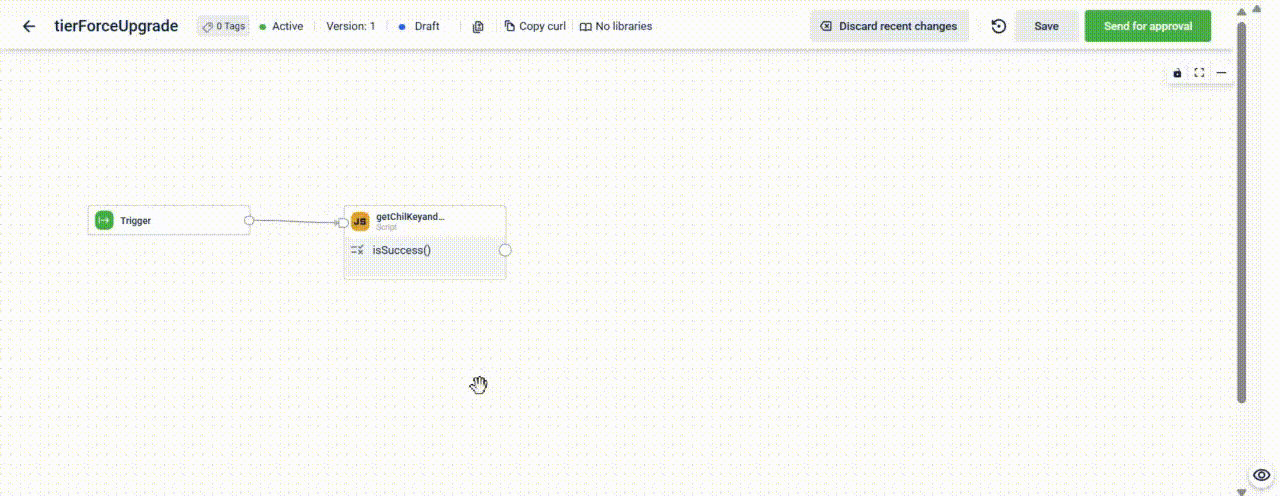OAuth Block
The OAuth block generates an OAuth token for a given key and secret during the dataflow execution.
Example scenario
Requirement
A parent organization manages four child organizations, each requiring 10 unique APIs to perform organization-specific operations. This results in a total of 40 APIs—10 per child organization. This arrangement has caused redundancy, increased maintenance efforts, and heightened complexity. To simplify this, the OrgContextSwitch block is utilized. The OrgContextSwitch requires an OAuth token to connect to the child organization.
Solution
To generate the OAuth token during the dataflow execution, use the OAuth block.
Refer to this dataflow example to understand its configuration for the use case.
Make sure you have access to ParentOrgNew org (51956) and access to Neo.
Configuring the OAuth Block
To configure the OAuth block,
- From the dataflow canvas, click on the connector.
- Select the Capillary’s OAuth block from the pop-up window.
- In the Block Name, enter the name of the block.
Note: Block names cannot contain spaces or special characters, except for underscores (_). Use camelCase or snake_case formatting. - In the Client Key, enter the key used to generate the OAuth token.
- In the Client Secret field, enter the secret to generate the OAuth token.
Note: If the Key and Secret are stored in the Configuration Manager, you can use DAO functions to retrieve them. - Configure the input execution logic, cachable feature, and define the execution path as per the requirement.
- Click Done.

Configuring Capillary's OAuth block
Updated 5 months ago
